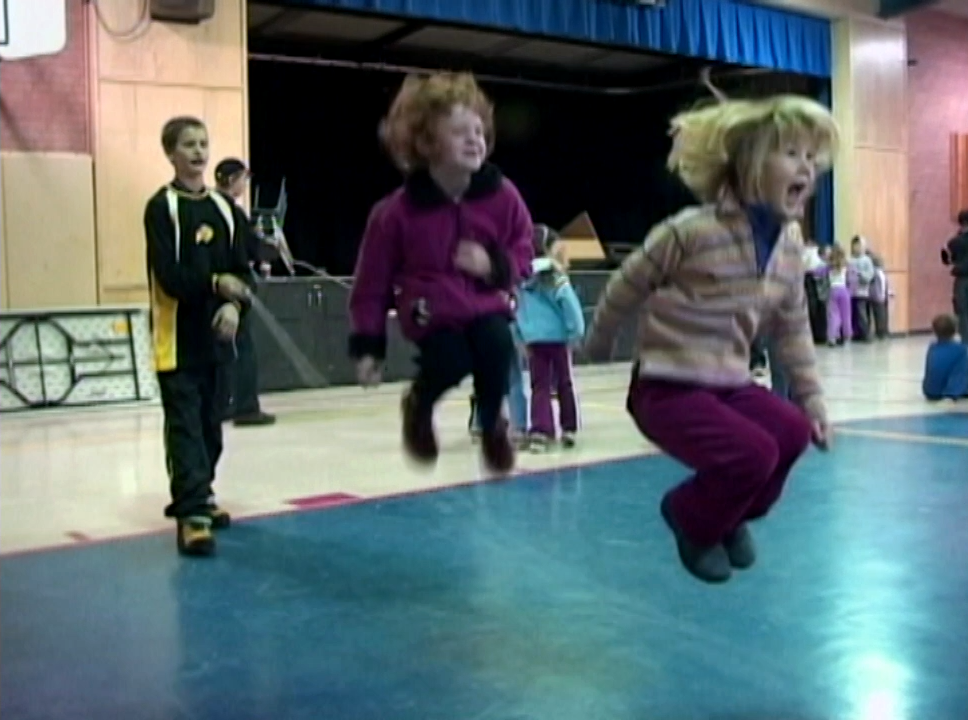
Song of Our Children
Inclusion of children with special needs in mainstream classrooms reveals benefits for all kids.
How do schools successfully include children with special needs in classrooms with non-disabled peers? In Song of Our Children, we meet teachers, parents, and students whose daily routines exemplify what “educational inclusion” means and what it takes to make it work. This moving portrayal of four memorable children — preschool through high school – reveals the challenges, strategies, and benefits of inclusion for all.
Song of Our Children won a CINE Golden Eagle and was broadcast nationwide on PBS. It also won the National Association of Film and Digital Media Artists (NAFDMA) Insight Award, the Community Shares “Social Justice Film of the Year Award” given at the Ohio Independent Film Festival, and the “Directors Citation Award” of the Black Maria Film Festival. Featured at many US film festivals, it also screened at festivals in Canada, Iran, and Turkey.
Released 2013
Any teacher, parent, or administrator looking for a way to begin a discussion about what it really means to be diverse, and to truly educate, include, and honor children with disabilities should watch this film. Song of Our Children does for these students what Chasnoff’s It’s Elementary did for students from gay and lesbian families; it debunks, demystifies, and challenges us to think in new ways. This film’s voice is refreshingly honest. How could it not be, for the words are those of the parents and teachers living and working with these kids–and the kids themselves. I particularly appreciated the range of ages represented and the way the film depicts all kinds of diversity (racial, cultural, socioeconomic, family structure) in the families interviewed.
David Bond
Elementary Division Head, Windrush School
El Cerrito, California
Song of Our Children is a must-see documentary for anyone interested in the education of all children and those who hold out hope that the next generation will be more diverse, more tolerant and more informed than any before. Strong and Tweedy’s film helps to narrow the gap between what we know through evidence-based research and what we do. It’s encouraging to see families and educators working through the challenges together. This film will have an immediate impact on policy and practice. Show it often to friends, family, neighbors, teachers, administrators, principals, PTO’s, school improvement teams, colleges and universities, businesses, government agencies, special education advisory committees and anywhere that people will gather to watch this poignant film.**** (4 Stars).
Anastasia Lawhead
Parent and Advocate
Thank you so much for the extraordinary film Song of Our Children. We are the Parent Training and Information Center for Arizona, and we will use it extensively in our work with families and professionals. I hope many people are encouraged to use this excellent resource.
Ginger Barnhart
Director of Education and Training,
Raising Special Kids
Phoenix, Arizona
Beret E. Strong and John Tweedy’s Song of Our Children looks at the shift in education policies for working with special-needs children. Beginning with archival black-and-white film clips of institutionalized kids, the program moves on to examine contemporary accommodations in Colorado mainstream classrooms for elementary, middle, and high school special-needs children, focusing on four students who are assisted by paraprofessionals and/or classmates. Featuring interview clips with both parents and educators, the film emphasizes that each child is an individual with different needs and abilities, but most everyone onscreen insists that all children should be mainstreamed out of “special ed,” which is treated as if it were a sort of leper colony. While it is best to have children in the “least restrictive environment” in accordance with congressional law, sometimes special education classrooms are more comfortable and welcoming environments for special-needs students. One mother here sadly recounts how her son doesn’t get invited to birthday parties like the other kids—but he very likely would be if he were in special ed, where like-minded parents would be sure to include him. A solid discussion starter on the controversial issue of inclusion for special-needs children, this is recommended.
*** (3 stars)
Video Librarian
In the film, grainy, black-and-white images of special-needs children of yesteryear are spliced with modern-day footage of inclusive education classrooms…. In the modern footage, special-needs children successfully interact in regular classrooms. One thing is clear from the contrast of the modern images with the old: We have made progress in the area of special-needs education. Also clear in Song of Our Children is that we still have a ways to go. But while there is work to be done, the images in Song of Our Children are inspirational, illustrating what results can be achieved through inclusive education.
Boulder Weekly





